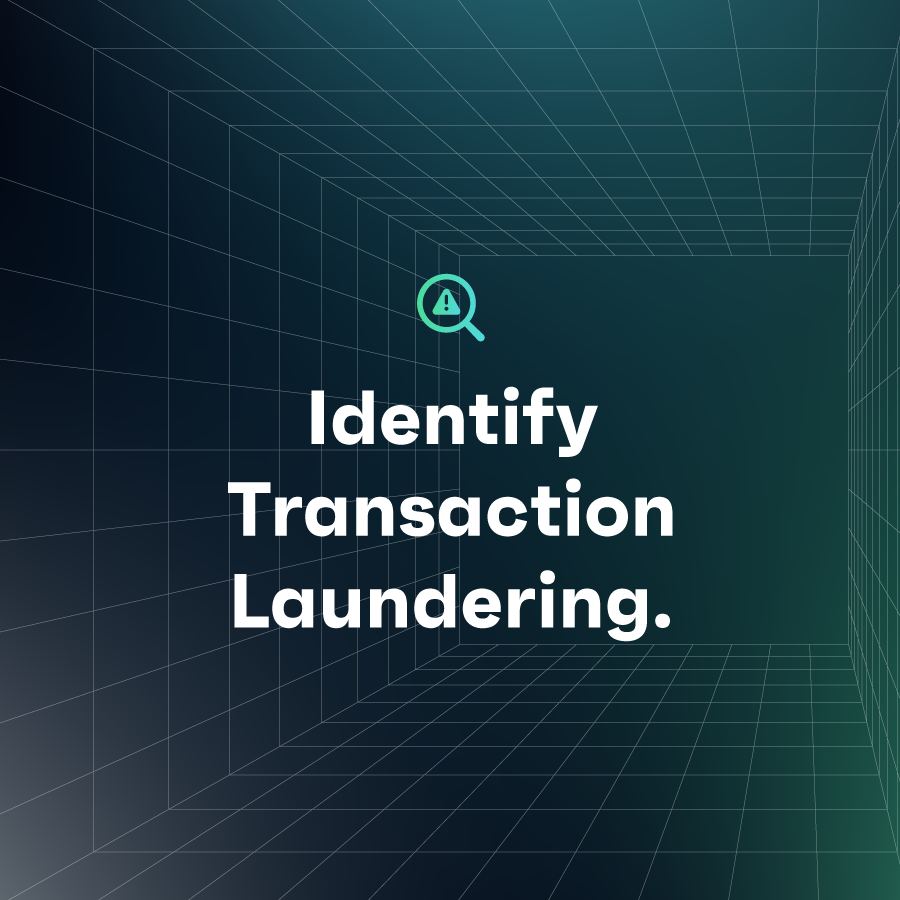
Finally, you stumble across an obscure website with exactly what you’re looking for – the only thing is the strange price tags. $3000 for a pillow? $10,000 for a duvet cover? You dive deeper and notice some odd bot-like reviews and a barely maintained Instagram profile. If your suspicions have kicked in, then you would be right on the money – this could be a website used for transaction laundering.
Transaction laundering is a method used by sneaky merchants, aka, illicit merchants to trick a payment provider's approval process to get a merchant account under false pretences – like selling ‘bedding’.
$155 billion! That’s the amount of money estimated to have been laundered online in 2016 – and since then, fraudsters have become even more sophisticated in their tactics.
Fraudsters use transaction laundering to avoid expensive registration, regulation, or restrictions that may apply to their real business activities, or to sell illegal products or services online.
In this article, payabl.’s Chief Risk Officer, Oleg Stefanets, will explore the trends and red flags of transaction laundering, as well as how to detect it with real-life examples of the activity.
Transaction laundering has emerged as a grave threat to financial compliance and customer trust in the digital age. This deceptive practice allows illicit merchants to exploit payment systems by obtaining merchant accounts under false pretenses. By disguising their illicit activities behind seemingly innocuous businesses, they manipulate the vetting process, making it challenging for payment providers to detect their true intentions.
Transaction Laundering on Acquirer Side
Illicit merchants use transaction laundering to get around a payment provider's screening process to obtain a merchant account under false pretenses so they can take online payments.
This merchant will set up a seemingly innocent website as a front to process sales for a different risky or illegal business. They do this by processing their transactions through a “legitimate” business, avoiding scrutiny by the payment provider. They are then able to carry out their fraudulent activities and fly under the radar.
Why Fraudsters Use Transaction Laundering
It’s estimated that the amount of money laundered annually is almost 5% of the global GDP, or $800 billion and with a growing digital economy, fraudsters are finding ways to include online payments in their arsenal of laundering tactics.
Fraudsters use transaction laundering to avoid the expensive registration, regulation, or restriction that may apply to their real business activities. They also use it to sell illegal products or services online, which allows them to operate without being caught.
##What a Laundering Website Looks Like These types of websites generally have a simple template design, often with stock images and brief text. They have very low to no web traffic and are hidden from search engines, with pages not indexed by Google. The website is usually recently created and has no social media footprint or public reviews. Fake employees on LinkedIn are another hallmark of a laundering website. A higher-than-usual market price is another. For example, simple flowers are sold for €200 when the usual price is €50. This discourages real customers from making a purchase.
Red Flags
There are several red flags to watch out for when it comes to transaction laundering. The transaction history of the website can show irregularities, such as strange price points or consumers checking out oddly large quantities. Local currency discrepancies and customers located in different countries that are purchasing items that don't really make sense are other giveaways. For example, a consumer in Poland regularly purchasing flowers in Cyprus could be considered a red flag.
Online Presence
A legitimate business will generally have some kind of online footprint, including steady website traffic, Google ranking, public reviews, active social media accounts, marketing, and transaction data. These elements are often missing with a contracted website.
Chargebacks
In some cases, the name of the real business may appear on chargeback documentation instead of the transaction laundering website. This is common with unregulated forex and investment websites where customers often raise chargebacks. However, chargebacks are uncommon for businesses such as drugs and nutraceuticals because they are less likely to be reported to the bank because the people shopping on these websites know exactly what they are really getting
When reviewing chargeback documentation, financial institutions should look for name discrepancies between the listed business and the transaction laundering website. If there are discrepancies, it may be a sign that the website is being used for transaction laundering.
Data Footprints
Transaction laundering websites typically leave behind a number of digital footprints or data points that can be used to identify and track their activities.
IP addresses are a valuable source of information. By analyzing the IP address of a website, financial institutions can identify the location of the website and its owners. WHOIS data can also be used to identify the registrant of a website. Website contact details, including phone numbers, emails, addresses, and company names, can also provide valuable information.
Social media and other online presence can also be used to identify and track the activities of transaction laundering websites. Websites and social media accounts associated with the site's owners or operators can be used to identify and track their activities. Website traffic information, including outgoing and incoming links, can also provide valuable insights into the activities of transaction laundering.
Connections between illicit website and transaction laundering website
Transaction laundering can involve a complicated network of websites and payment processors. One of the methods used by illicit merchants is to create a direct link and reconnection to the transaction laundering website from a seemingly legitimate website (the violative website) to process transactions.
In this scenario, the illicit website is used to sell dummy products or services, while the real transactions are processed through the transaction laundering website. The payment gateway used in the middle is often PCI-compliant to give the appearance of legitimacy. This allows the merchant to avoid detection by the payment provider's screening process and continue to launder transactions.
“It’s up to us as a payments provider to be vigilant about transaction laundering and to keep up with changes in fraudulent activity so we can prevent onboarding illicit merchants.”
Oleg Stefanets
Transaction laundering is a growing problem in the online payments industry, and it involves illicit merchants using a network of websites and payment processors to launder transactions for various illegal activities. payabl. has identified various methods and techniques to detect transaction laundering, including test transactions, and we work closely with our clients to prevent and mitigate the risk of transaction laundering.
It is essential for payment providers to remain vigilant and proactive in detecting and preventing transaction laundering to protect their business and the integrity of the payments industry. By staying up-to-date on the latest trends and techniques used by fraudsters, payment providers can protect themselves and their clients from financial losses and reputational damage.
Oleg Stefanets is the Chief Risk Officer at payabl. and along with his team, manages the operational risk. He is a risk management specialist with vast experience in the online payments industry, particularly in card schemes acquiring, merchant underwriting, mitigation of risk and fraud management. Oleg is passionate about online risk investigation and new technologies in the field of fraud prevention and chargeback handling.
